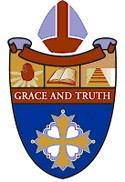Founded 2007 Phone +61 8 9439 3499 | Name Peter Carnley Consecration 1981 | |
 | ||
In office 1981-2005 (Primate 2000-2005) Address 386 Wellard Road, Wellard WA 6170, Australia Similar Tranby College, Comet Bay College, Kolbe Catholic College, Living Waters Lutheran College, Rockingham Senior High School | ||
Peter carnley year 12 ball 2015
Peter Frederick Carnley AC (born 17 October 1937) is a retired Australian Anglican bishop and author. He was the Archbishop of Perth from 1981 to 2005 and Primate of the Anglican Church of Australia from 2000 until July 2005. He ordained the first women priests in Australia. In the 2007 Queen's Birthday Honours list, he was appointed a Companion of the Order of Australia. He is married to Ann Carnley.
Contents
- Peter carnley year 12 ball 2015
- The bell tower video postcard peter carnley anglican community school
- Education and teaching
- Ordination of women
- Ecumenism
- Controversy
- Books
- References

The bell tower video postcard peter carnley anglican community school
Education and teaching
Carnley was born in New Lambton, New South Wales. He studied in Australia at Trinity College, Melbourne and in England at Emmanuel College and St John's College, Cambridge, and became warden of St John's College at the University of Queensland, as well as lecturer in theology at the University of Queensland, before becoming a bishop. As a lecturer in the 1970s he experimented with Process Theology. He holds many honorary doctorates and a Lambeth DD (2012) and is an honorary fellow of Trinity College (Melbourne), Emmanuel College (Cambridge) and St John's College (Cambridge).
Ordination of women
In the 1980s Carnley supported the ordination of women and, on 7 March 1992, he ordained the first women priests in the Anglican Church of Australia at St George's Cathedral, Perth. His sermon on the occasion took as its reference an autobiographical piece by Charlotte Perkins Gilman entitled The Yellow Wallpaper. Carnley used Gilman's account of the self-destruction consequent on a "benignly prescribed, submissive, middle-class role" demanded of women in the 19th century to consider the "implications of the philosophy that women should "stay in their place, maintaining silence, concealing problems and repressing creativity". The yellow wallpaper of the title is what the imprisoned protagonist in Gilman's story peels off the walls as she goes mad. Carnley used it as a metaphor for the situation of the women who had been waiting to be allowed to become priests, saying: "Today, we are peeling away the sickly yellow, faded, silverfish-ridden wallpaper with which the church has surrounded itself and imprisoned women for centuries past in its benign and perhaps well-meaning determination to confine them by role."
Ecumenism
From 2004 he served as co-chair of the Anglican Roman Catholic International Commission (ARCIC II) seeking greater unity between the Roman Catholic Church and the Anglican Communion. He served as Distinguished Visiting Professor in systematic theology at the General Theological Seminary of the Episcopal Church in New York City for from 2010 to 2013.
In 2001, amid questions about the possibility of the church celebrating same-sex marriages, Carnley suggested that the church might be able to bless gay "friendships".
Controversy
In The structure of resurrection belief Carnley outlines several different ways Christians frame their belief in the resurrection of Christ and the way the resurrection frames their faith. He explores notions of the resurrection as an historical event, as an eschatological event and as a non-event. He also explores the role of memory, presence and faith in believing in the resurrection.
When Carnley became the Australian primate, this book caused controversy, with some saying it showed Carnley himself did not believe in the resurrection. Others objected to comments about how the Christian belief in the uniqueness of Christ had been misused to persecute people of other faiths.
Carnley says he believes in the uniqueness of Christ: "I think Jesus Christ is the way, the truth and the life, but that doesn't mean that other religions don't have any truth at all."
He also says he has an Easter (or resurrection) faith in the real presence of the living Jesus: "The Christian story, which pre-eminently transmits and celebrates the memory of Jesus and God’s revelatory deed in and through his life and death, should lead us beyond itself to a living encounter with the real presence of all that it celebrates and rehearses: him, whom by story we recall, we actually know as the living Spirit of the fellowship of faith." He also asserted that the resurrection is "the miracle of the Christian tradition."
Books
and a contributor to:
